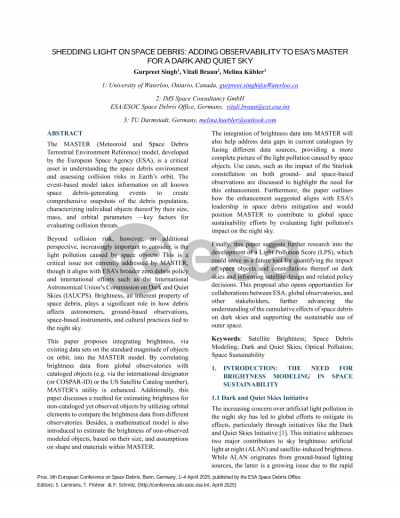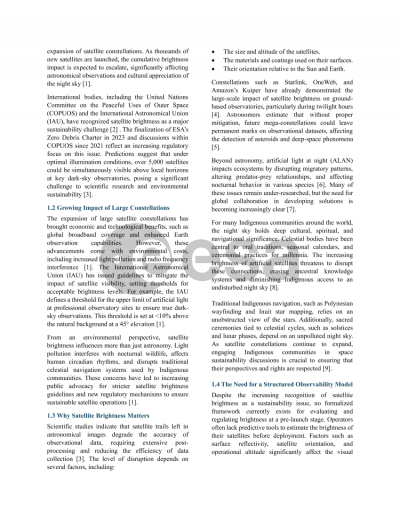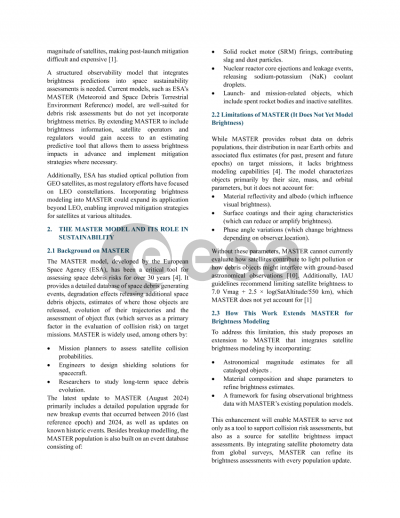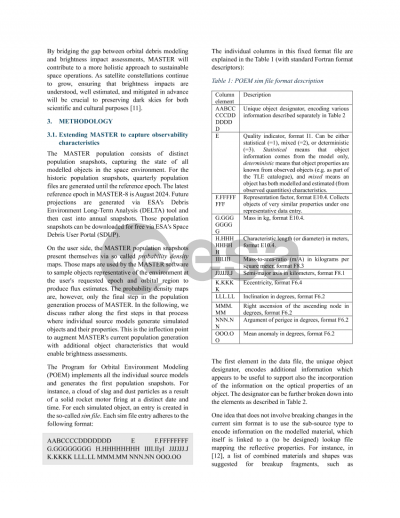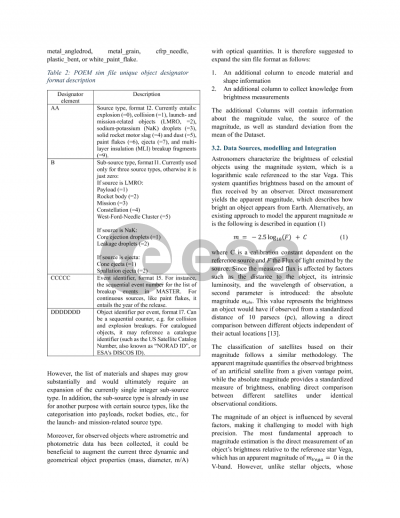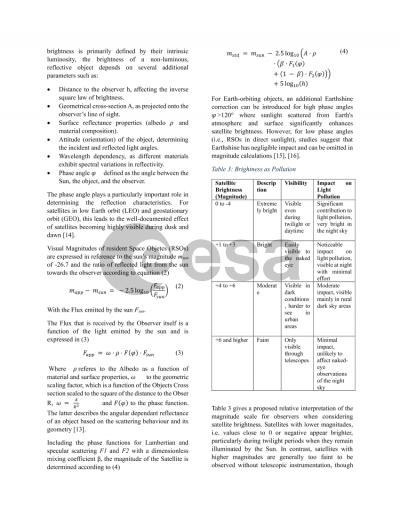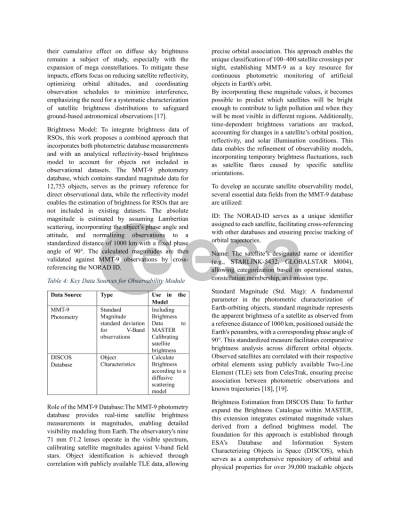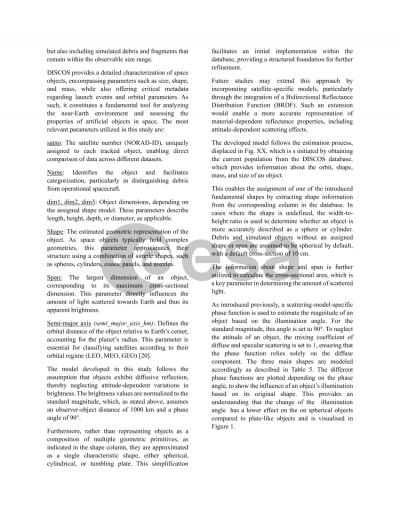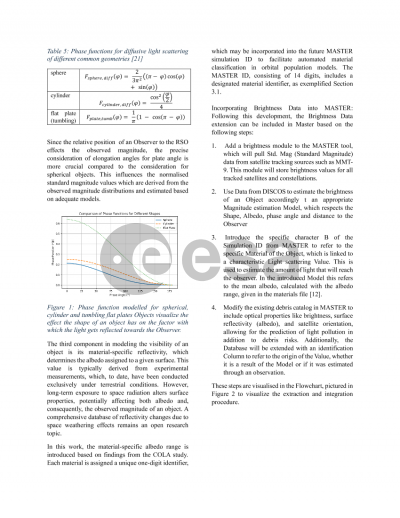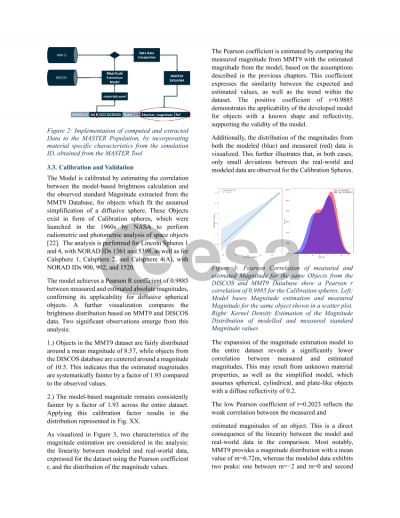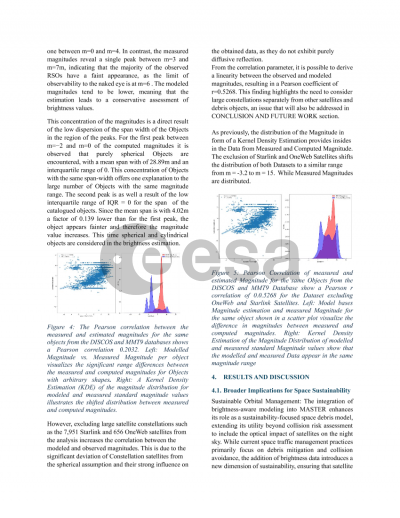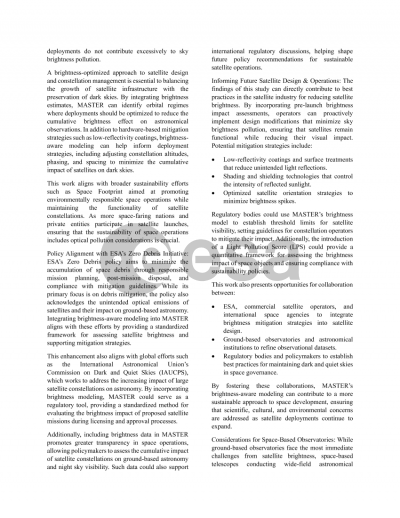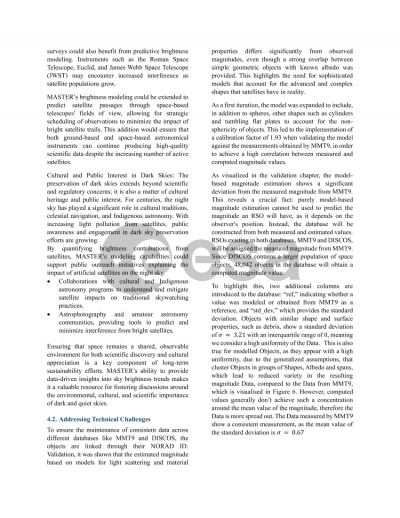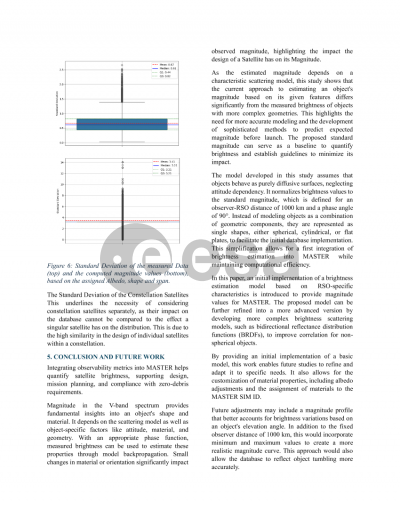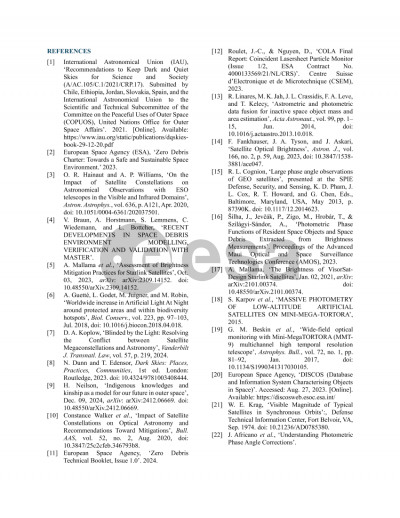Document details
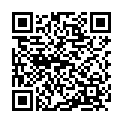
Abstract
The MASTER (Meteoroid and Space Debris Terrestrial Environment Reference) model, developed by the European Space Agency (ESA), is a critical asset in understanding the space debris environment and assessing collision risks in Earth’s orbit. The event-based model takes information on all known space debris-generating events to create comprehensive snapshots of the debris population, characterizing individual objects thereof by their size, mass, and orbital parameters —key factors for evaluating collision threats.
Beyond collision risk, however, an additional perspective, increasingly important to consider, is the light pollution caused by space objects. This is a critical issue not currently addressed by MASTER, though it aligns with ESA’s broader zero debris policy and international efforts such as the International Astronomical Union’s Commission on Dark and Quiet Skies (IAUCPS). Brightness, an inherent property of space debris, plays a significant role in how debris affects astronomers, ground-based observations, space-based instruments, and cultural practices tied to the night sky.
This paper proposes integrating brightness, via existing data sets on the standard magnitude of objects in orbit, into the MASTER model. By correlating brightness data from global observatories with cataloged objects (e.g. via the international designator (or COSPAR-ID) or the US Satellite Catalog number), MASTER’s utility is enhanced. Additionally, this paper discusses a method for estimating brightness for non-cataloged yet observed objects by utilizing orbital elements to compare the brightness data from different observatories. Besides, a mathematical model is also introduced to estimate the brightness of non-observed modeled objects, based on their size, and assumptions on shape and materials within MASTER.
The integration of brightness data into MASTER will also help address data gaps in current catalogues by fusing different data sources, providing a more complete picture of the light pollution caused by space objects. Use cases, such as the impact of the Starlink constellation on both ground- and space-based observations are discussed to highlight the need for this enhancement. Furthermore, the paper outlines how the enhancement suggested aligns with ESA's leadership in space debris mitigation and would position MASTER to contribute to global space sustainability efforts by evaluating light pollution's impact on the night sky.
Finally, this paper suggests further research into the development of a Light Pollution Score (LPS), which could serve as a future tool for quantifying the impact of space objects and constellations thereof on dark skies and informing satellite design and related policy decisions. This proposal also opens opportunities for collaborations between ESA, global observatories, and other stakeholders, further advancing the understanding of the cumulative effects of space debris on dark skies and supporting the sustainable use of outer space.
Preview
